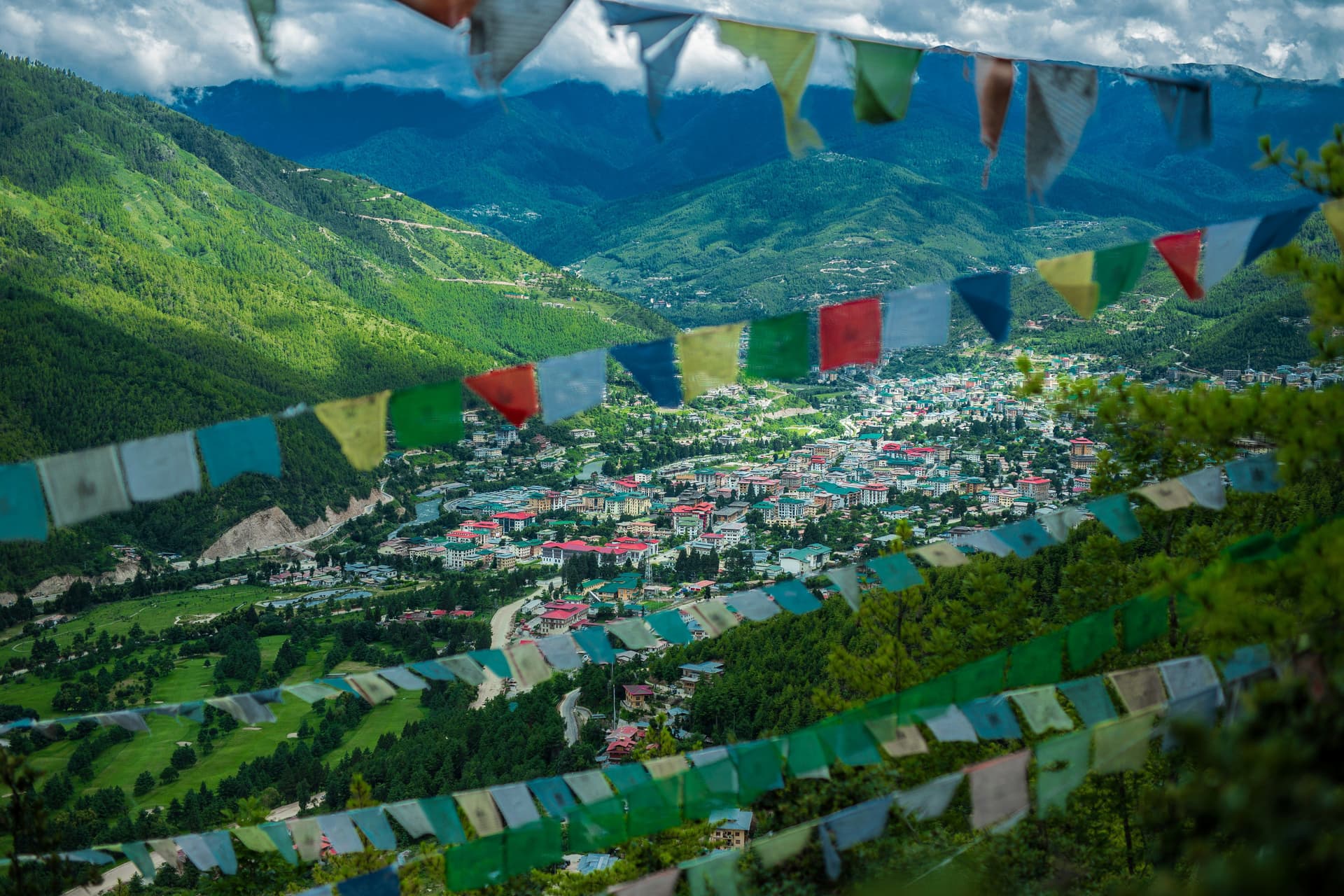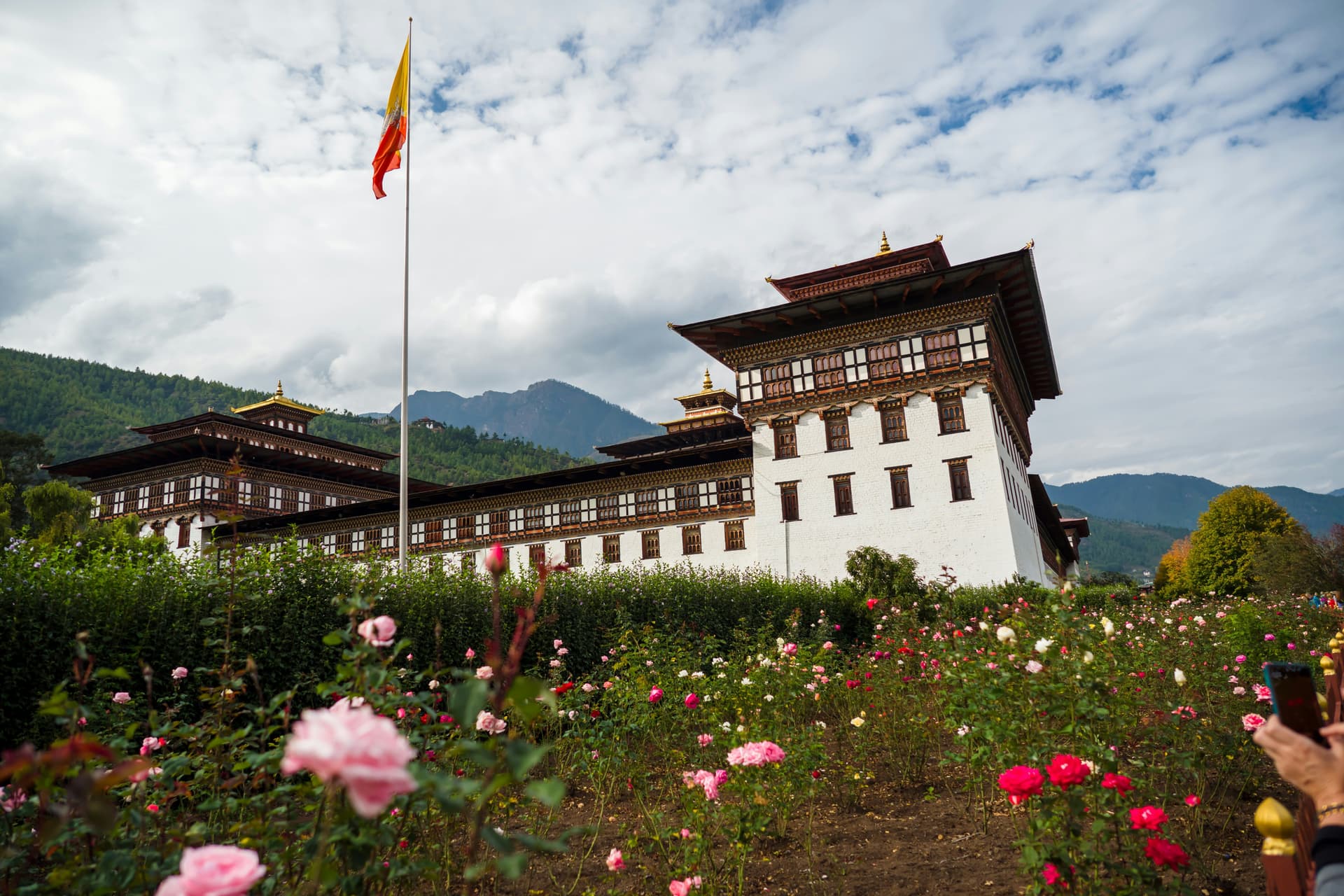Best Time to Visit Bhutan: Weather, Festivals & Travel Tips
24-02-2025
1058

From the vibrant blooms of spring to the golden hues of autumn, the mystical monsoon of summer, and the serene snowfall of winter—Bhutan is a year-round wonder. But when is the best time to visit? That depends on what you seek!
If you are wondering when the best time to visit Bhutan is, you have come to the right place! Bhutan, known as the "Land of the Thunder Dragon," is a Himalayan kingdom rich in culture, breathtaking landscapes, and unique traditions. Depending on your interests—whether you seek adventure, cultural experiences, or scenic beauty—the best time to visit Bhutan varies. In this guide, we will break down Bhutan's climate, seasonal highlights, festivals, and regional differences to help you plan the perfect trip.

Bhutan’s Climate Overview
Bhutan experiences a diverse climate due to its varying altitudes. While the southern regions have a subtropical climate, the northern areas, closer to the Himalayas, experience severe winters with snowfall. The country has four distinct seasons:
- Spring (March to May): Pleasant temperatures with blooming flowers and clear skies.
- Summer/Monsoon (June to mid-September): Warm but with heavy rains, leading to lush greenery.
- Autumn (mid-September to November): Cool weather with clear skies, making it ideal for trekking and festivals.
- Winter (December to February): Cold temperatures, especially in the northern regions, with occasional snowfall.
Month-Wise Breakdown of the Best Time to Visit Bhutan
December, January & February (Winter)
- Weather: Cold temperatures, especially in Central and Eastern Bhutan. Snowfall occurs in higher regions.
Why Visit?
- Fewer tourists, leading to a peaceful travel experience.
- Beautiful snowy landscapes, perfect for winter photography.
- Enjoy unique winter festivals such as Trongsa Tshechu and the Nomad Festival in Bumthang.
- Best For: Travelers who enjoy winter scenery, fewer crowds, and cultural festivals.
March, April & May (Spring)
- Weather: Temperatures range from mild to warm, and the valleys are covered in colorful rhododendron blooms.
- Why Visit?
- Ideal trekking conditions with clear skies and vibrant landscapes.
- Major festivals such as Paro Tshechu, Punakha Tshechu, and Ura Yakchoe Festival in Bumthang.
- Wildlife enthusiasts can spot Himalayan species in national parks.
- Best For: Nature lovers, photographers, trekkers, and cultural travelers.
June, July & August (Monsoon/Summer)
- Weather: Heavy rainfall, humid conditions, and occasional landslides.
- Why Visit?
- Fewer tourists, making it a great time for budget travelers.
- Lush greenery and flowing rivers offer spectacular natural beauty.
- Experience unique monsoon festivals like the Haa Summer Festival and Kurjey Tshechu in Bumthang.
- Best For: Offbeat travelers, monsoon lovers, and those looking for cultural immersion.
September, October & November (Autumn)
- Weather: Clear skies, comfortable temperatures, and breathtaking landscapes post-monsoon.
- Why Visit?
- The best time for trekking, as trails are dry and views of the Himalayas are unobstructed.
- Bhutan’s most famous festivals, including Thimphu Tshechu, Jambay Lhakhang Drup, and the Black-Necked Crane Festival in Phobjikha Valley.
- Experience Bhutanese culture at its peak, with vibrant performances and rituals.
- Best For: Trekkers, festival enthusiasts, and those seeking Bhutan’s best weather conditions.
Best Season to Visit Bhutan
Spring (March-May)
- Best for trekking, sightseeing, and witnessing Bhutan’s natural beauty.
- Rhododendron forests and wildflowers are in full bloom.
- Ideal for photography and outdoor activities.
Autumn (September-November)
- Peak tourist season due to the best weather conditions.
- Best time for trekking and cultural exploration.
- Witness Bhutan’s most important festivals and celebrations.
Winter (December-February)
- Ideal for budget travelers as accommodations are cheaper.
- Best time for experiencing Bhutan’s winter landscape.
- Visit regions like Punakha, which remain warm and pleasant.
Monsoon (June-August)
- Least recommended due to heavy rainfall and difficult travel conditions.
- However, it’s a great time for witnessing the lush greenery and attending summer festivals.
Best Time to Visit Bhutan Based on Regions
Western Bhutan (Thimphu, Paro, Haa Valley, Punakha)
- Best Time: Spring and Autumn
- Why?
- Paro and Thimphu host the most important festivals.
- Punakha remains pleasant even during winter.
- The Haa Valley is best visited during the Haa Summer Festival in July.
Eastern Bhutan (Trongsa, Wangdue, Gangtey, Bumthang)
- Best Time: Autumn and Winter
- Why?
- Best for witnessing cultural and religious traditions.
- Bumthang Valley is stunning in October and November.
- Snowfall in winter offers picturesque views.
Northern Bhutan (Laya, Lunana, Snow-Capped Himalayan Region)
- Best Time: Late Spring and Early Autumn
- Why?
- Best trekking conditions with clear views of the Himalayas.
- Festivals such as the Jomolhari Mountain Festival celebrate snow leopards and wildlife conservation.
Southern Bhutan (Phuentsholing, Samdrup Jongkhar, Gelephu)
- Best Time: Winter and Spring
- Why?
- These regions are warmer year-round and best explored when other parts of Bhutan are cold.
- Lush green scenery during the monsoon but with heavy rains.

Bhutan is a year-round destination, but the best time to visit depends on your travel preferences. If you love festivals and clear weather, visit in Spring (March-May) or Autumn (September-November). If you seek solitude, winter is perfect for a peaceful experience. While the monsoon season is not ideal for travel, it offers a unique glimpse into Bhutan’s rural life and summer festivals.
No matter when you visit, Bhutan's cultural richness, stunning landscapes, and warm hospitality will leave you with unforgettable memories. Plan your trip accordingly and immerse yourself in the magical kingdom of Bhutan!
Useful Links :